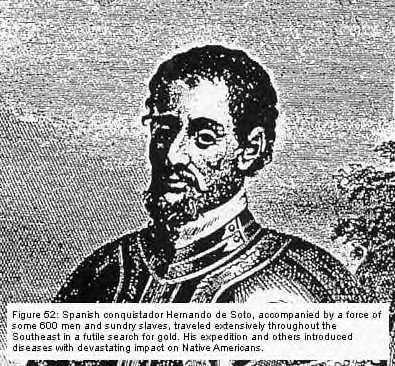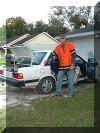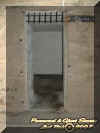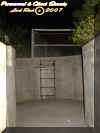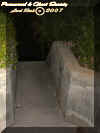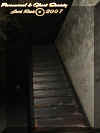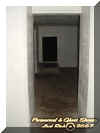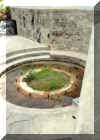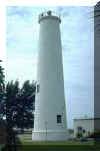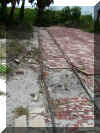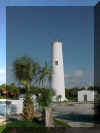|
|
||||||||||||||||||||||||||||||||||
|
Fort DeSoto is an explorer dream come true I have to say in the last 4 years of living in Florida I found this to be one of the most awesome places. Not so much that it is haunted its the fact that the history is very extensive and I do not know about you but being on an island in the Gulf Of Mexico in the middle of the night on a fort is enough to give anybody Goosebumps haunted or not. Before the fort however the site had other uses so lets talk a little bit about before the fort was built. For over 400 years the Tocobaga Indians roamed these islands at the mouth of Tampa Bay and Gulf Of Mexico. Their was always a fresh supply of clams, oysters, conchs, and fish. The tribes lived peacefully building their mounds....some had very sophisticated societies believe it or not. The temple mounds throughout Saint Petersburg on the mainland are proof of this. In 1528 sometime in April a Spanish Explorer land on the Gulf Coast by the name of Panfilo De Narvaez. The explorers often called the Conquistadors explored the barrier islands which includes Egmont Key and Mullet Key which eventually both forts would be built on hence our exploration of Fort DeSoto. In 1539 a well-known Spanish explorer came to the Tampa Bay area and started his conquest by the name of Hernando De Soto. His name may be even more relevant then Christopher Columbus perhaps. He encountered alot of obstacles on his journey much like we do...overcoming Indians...and Florida's harsh climates such as hurricanes....thick jungle fauna etc. Hence why the Fort on the island is named after him. Sadly in my opinion out countries belief system has a sick way of thinking. We honor a man who slaughtered the Indians...while his men raped the women...while villages were burned to the ground. Nothing to celebrate over but nonetheless it does not change the fact that DeSoto was a very brave explorer to journey into what was called the new world. Only a few years later in 1542 he would die and his body would be buried...or perhaps thrown into the Mississippi River to prevent the Indians from taking his body. In 1849 a group of US Army Engineers landed on the island from the Schooner Phoenix to survey the coastline for possible coastal defense. Robert E. Lee was a Colonel in charge of this expedition as they studied the various islands. Out of the 5 islands they chose Mullet and Egmont Keys for strong holds. At this point they claimed the land as US property prohibiting anybody from developing the land. In 1961 the Civil War occurred their was no forts at this time but the islands were a place that the Union troops could set up a blockade which would block passage between the two islands. If the confederates tried to get past the blockade they would be seen from atop of the Egmont key Lighthouse. After the war again it was abandoned till around 1882! In 1898 a 275' wharf extended into Tampa Bay were built along with a mess hall, workmen quarters, stables, and offices. Also a narrow gauge railway ran between the wharf and the construction plant and another line running to the battery site. In 1899 the land was cleared and the foundation forms were set however the stone which was supposed to be transported never arrived. In 1899 a quarantine station was established here on the eastern part of the barrier island. The workers had no stone to work with so they used a shell foundations. The concrete did arrive so they mixed it with the shell, sand, cement mix which made the walls and ceiling. The fort would serve a mortar battery. It did not get its name till 1900 and this fort would serve as a subpost for Fort Dade just across from it. You need a boat to get to the other islands. Captain Thomas H. Rees was the engineer in charge of the construction and it took roughly 14 months to build. In my opinion this is a pretty massive place maybe just a bunch of concrete walls it truly is amazing how much was used. From afar it almost feels like your approaching some temple. Fort DeSoto has the only four 12-inch seacoast rifled mortars in the United States...Model 1890 mounted on 1896 carriages. They are quite massive and would be enough to sink almost any ship. Also the fort had two 6 inch Armstrong rapid fire rifled guns model 1898 which were originally mounted at Fort Dade across the water and were the last two guns to be made of that model in this country. By 1906 the fort had 26 buildings which included a hospital, blacksmith, barracks, carpenter shop, administration building, bakery, storehouse, brick roads, concrete sidewalks, guardhouse, and mess hall with a kitchen. The fort was advanced but one thing it was not built for is dealing with the hot climate and the mosquito invasions. Unfortunately the Fort never was put to use it would serve as a coast defense during the Spanish American War. The war ended in the year of 1900 by that time we owned Puerto Rico, Guam, and the Philippines with Cuba. Puerto Rico would be an important strategic point for the defense of the Panama Canal in 1904. Despite the fort was not put to use for War it did have some other important uses throughout the century as you read further below. Since it was not used the Marine Hospital Service took over jurisdiction of it in 1901. It would inspect the aliens aboard ships arriving from foreign ports. In 1925 the station operated with over 20 buildings. The quarantine station operated till 1937 then transferred its operations to Gadsden Point which was closer to Tampa Bay. So the island had more then just the fort on it. During WWI it had about 22 soldiers and 4 officers and served as a guard post to protect Tampa Bay just in case of an invasion. Since the fort was downsized four of the post's mortars were disassembled and shipped off to Fort Rosecrans in SD California. In 1923 the Army officially abandoned and closed the forts leaving a caretaker per fort. Over those years many storms especially hurricanes have damaged both buildings. Many buildings were destroyed such as the Battery Bigelow in 1932. The army could not even find anybody to purchase the areas where the forts were. In 1938 Pinellas County purchased Mullet Key for $12,000 pretty sweet deal eh? Imagine owning your own island for less then a price of a brand new car. The DOD decided it wanted to purchase Mullet Key Back and use it as a bombing range. It would be turned into a subpost of Mac Dill Field. During WWII the island was used for bombing practice by the pilot who dropped the atomic bomb on Hiroshima a fact very few know about. After the war the county repurchased the island and put a toll road leading to the barrier island in the 1960s. Others could use the boat launches on Mullet Key to access the other islands close by. In 1963 the island was turned into a park and the quartermaster storehouse was rebuilt which would become a museum. In 1977 the batteries were placed on the National Register Of Historic Places. In 2005 Fort Desoto Beach was given honor as the top beach in the country. At night I was not able to see much of the beach but from what I did see it did look very beautiful even at night. Alot of people do not know this but in 2003 The Punisher was filmed at Fort Desoto and Mullet Key as they tried to make it look like Puerto Rico. Now jumping back into past history I wanted to talk about Fort Dade which sits just across the water from Fort Desoto. When I first moved here I always told people about how I would get a boat and go to Fort Dade unfortunately could not find one so I settled for Fort DeSoto...but trust me it crossed my mind a few times to get a raft and row across but the currents are very strong in this area so once again all I can do is talk about the history of Egmont Key since it goes hand in hand with Mullet Key. The historic Fort Dade was the sister fort of Desoto. Fort Dade survived three official wars.....over 3,000 black slaves and Indians were relocated from Egmont Key to Oklahoma and Arkansans. Egmont Key is one of the stops on the Trail Of Tears. In 1858 more then 150 Indians...including the infamous Billy Bowlegs...women and children boarded the overcrowded steamer Grey Cloud bound to Arkansas and Oklahoma. Billy Bowlegs was responsible for the burning of all these sugar mills we investigated in central Florida. In my opinion he is somewhat a hero to the Seminoles almost like a one man army and caused alot of trouble for the white man in FL. Just as Mullet Key being used as a blockade point....so was Egmont Key. You can see the lighthouse very easily from atop of Fort Desoto. I do not think Ill ever forget this adventure sadly I would share it alone. But anyhow as the story goes during the civil war in 1862 the U.S. Gunboat Tahoma and another federal ship proceeded into Tampa Bay and began shelling Tampa. On the way back to their ships they ran into Rebel Soldiers and the Battle of Ballast Point took place here. The confederate soldiers were being overrun by Union troops when they landed on Egmont Key so they took the fresnel lens from the lighthouse that would be used to spot their ships. So there was some small time tactical operations being done on the island. The fort on Egmont Key would take 16 years to build it was much more complex then Fort Desoto. It had 300 residents...more then 70 buildings which had electricity, telephones, tennis court, bowling alley, and movie theater. On the island like Mullet Key...Egmont Key also had a working railroad which would be used to distribute supplies and munitions. The gun batteries today are still on Egmont key but are in ruins three of them called Mellon, McIntosh, and Howard all crumbling. Then two more called Page and Burchsted on the south part of Egmont Key are underwater. The island also served as an embarkment point for Teddy Roosevelt and Rough Riders on their way to the Battle of San Juan Hill. It would also be used as a 10 day quarantine camp for Spanish American war troops that came back from Cuba. Other then that the fort sat battered by storms and age. During WWI Egmont key would be used by the National Coast Guard Auxiliary and members of the anti-submarine mine crews for training. Fort Dade would be used in WWII as a German U-boat lookout and a few were actually spotted so the Egmont Key did serve its purpose. The airforce also used this location as a practice bombing range for flour sack bombs. So two islands two forts and a shared history! Whether ghost haunt the islands one may never know but one thing is for sure Fort Desoto is more then just a slab of concrete! http://www.fortdesoto.com © By Lord
Rick
Fort Desoto & Mullet Key Egmont Key & Fort Dade
LEGEND:
|
||||||||||||||||||||||||||||||||||
|
|
||||||||||||||||||||||||||||||||||
|
|
|


